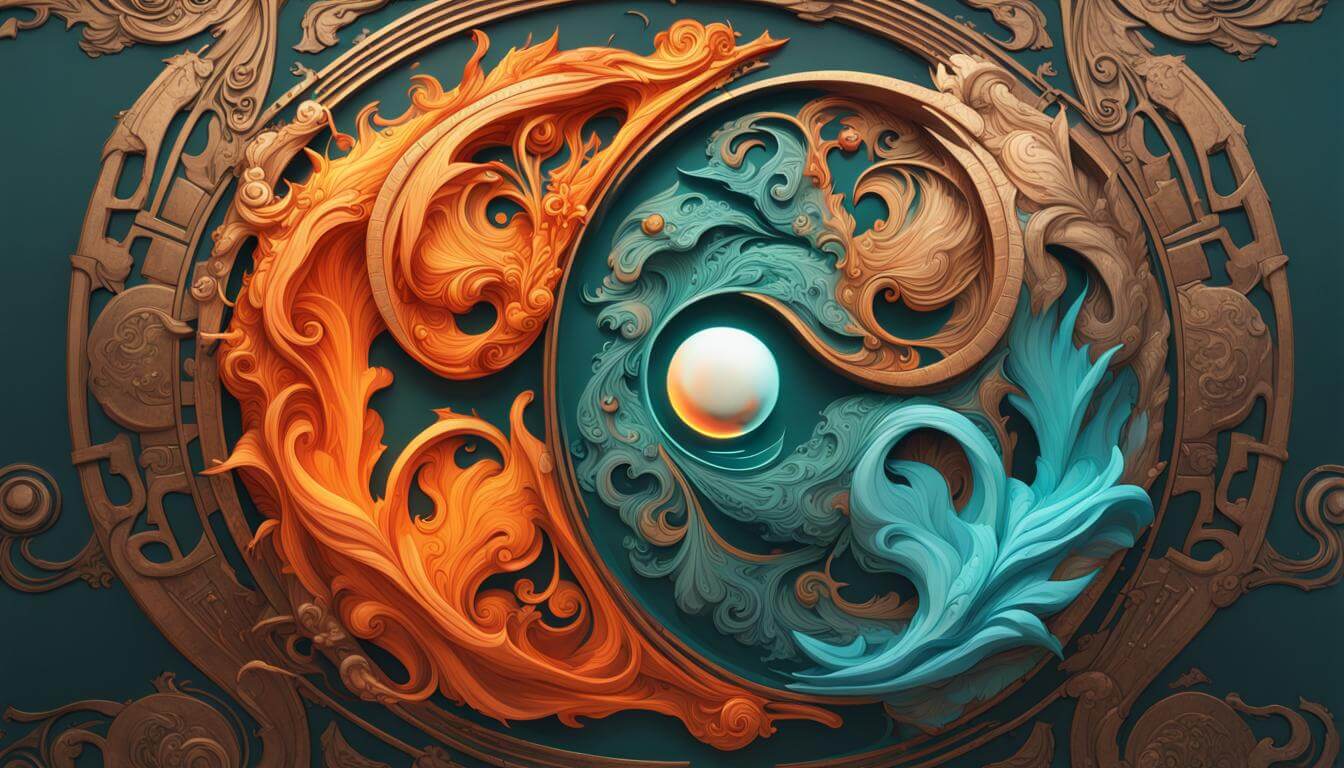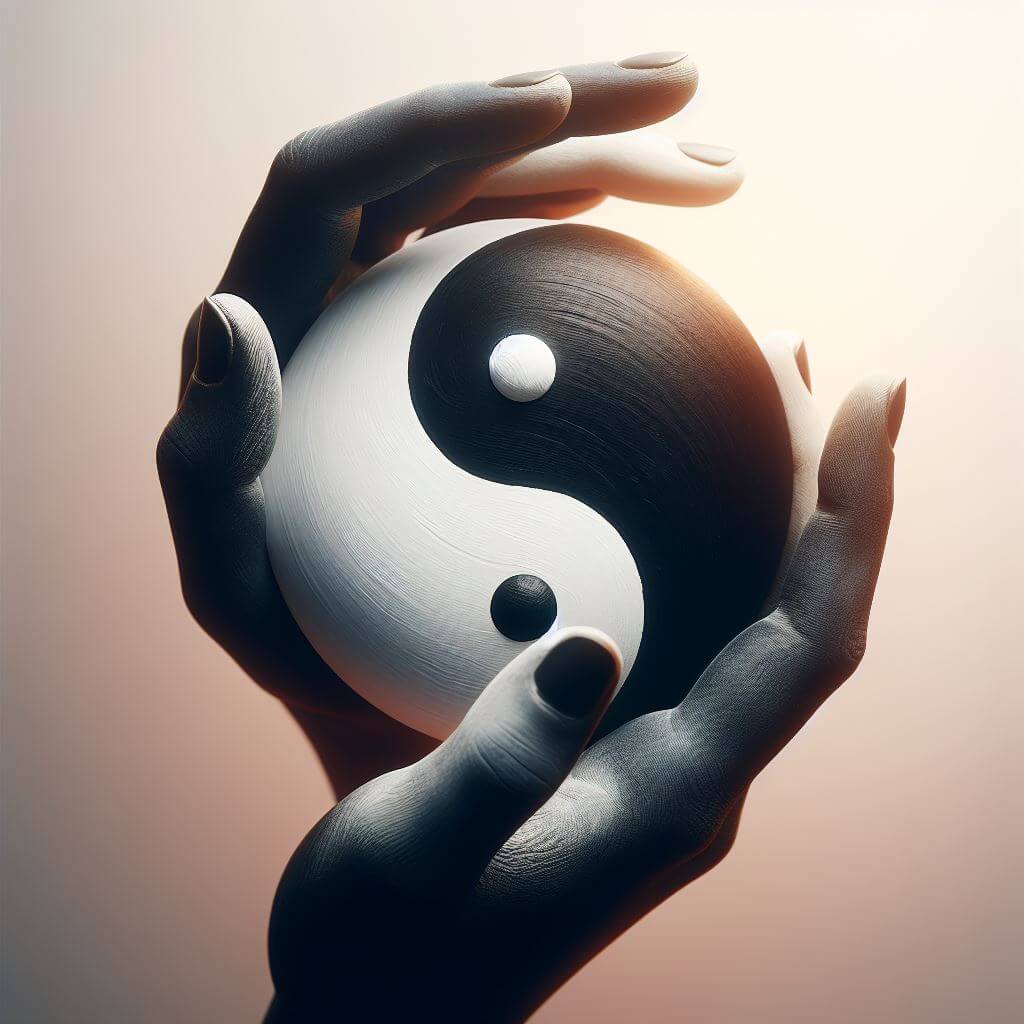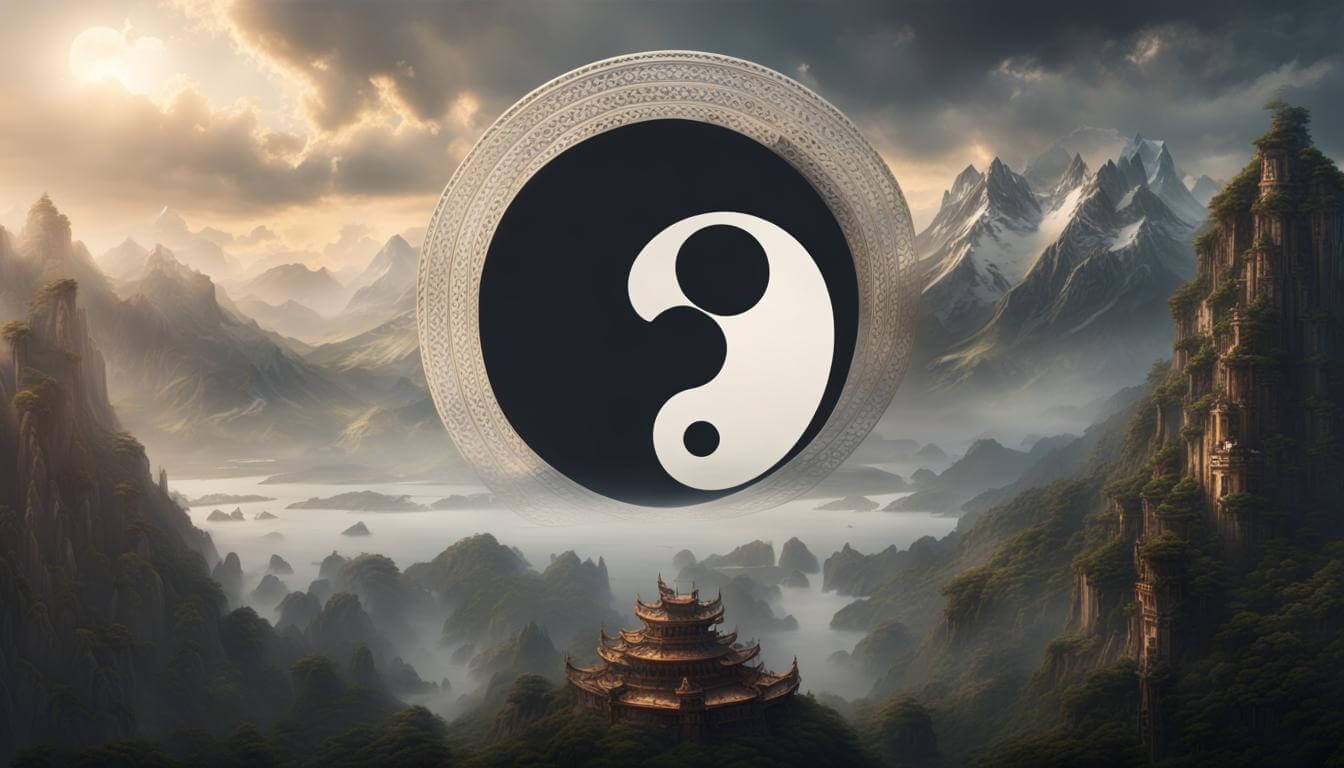Delve into the ancient roots of Yin and Yang, a foundational concept in Chinese philosophy. Uncover its historical origins, the symbolic interplay of opposites, and practical applications in daily life. Discover how the balance between Yin and Yang influences health, harmonizes with nature, and transcends cultural boundaries, resonating in both Eastern and Western worlds.

The concept of Yin and Yang is a fundamental principle in Chinese philosophy and culture. It represents the dualistic nature of existence and the interdependence of opposites. The idea is rooted in ancient Chinese cosmology and is often associated with Taoism, though it also influences other philosophical and cultural traditions.
The basic idea is that everything in the universe is composed of two opposite but complementary forces, known as Yin and Yang. These forces are in a constant state of dynamic balance and transformation. The concept is symbolized by a circle divided into two halves, with one half representing Yin and the other representing Yang. Each half contains a small dot of the opposite color, symbolizing the idea that within each force, there is a seed of the other.
Key characteristics of Yin and Yang include:
- Opposition: Yin and Yang are opposites, and one cannot exist without the other. They define each other through their relationship.
- Interdependence: Yin and Yang are interconnected and interdependent. Changes in one aspect will influence the other.
- Balance: The ideal state is one of balance between Yin and Yang. Imbalances can lead to disharmony and instability.
- Constant Change: The relationship between Yin and Yang is dynamic and in a constant state of flux. This reflects the cyclical nature of the universe.
Examples of Yin and Yang pairs include:
- Light and Dark
- Hot and Cold
- Female and Male
- Earth and Heaven
- Moon and Sun
The concept of Yin and Yang is used to explain various phenomena in Chinese medicine, philosophy, martial arts, and other aspects of traditional Chinese thought. It serves as a framework for understanding the dualistic nature of reality and the need for balance in all aspects of life.
Where does the symbolism of Yin and Yang originate, and what are its historical roots?
The symbolism of Yin and Yang has ancient roots in Chinese philosophy and cosmology, and it is deeply intertwined with the development of Taoism. The concept can be traced back to the earliest Chinese philosophical texts, such as the “I Ching” (Yijing or Book of Changes), which is a foundational work in Chinese thought.
Here are some key points regarding the historical roots and development of the Yin and Yang symbolism:
- I Ching (Yijing): The “I Ching,” believed to have originated around the Western Zhou period (1046–771 BCE), is one of the oldest Chinese texts. It is a divination system that incorporates the concepts of Yin and Yang. The hexagrams in the “I Ching” consist of broken (Yin) and solid (Yang) lines, forming the basis for the later development of the Yin-Yang philosophy.
- Daoist Philosophy: The concept of Yin and Yang became more explicitly associated with Daoist philosophy, particularly as expressed in the Dao De Jing attributed to Laozi. Daoism emphasizes living in harmony with the Dao, which is the fundamental principle or way of the universe. Yin and Yang are seen as manifestations of the Dao’s constant flow and balance.
- Natural Observations: The early Chinese philosophers observed the natural world and recognized dualities and cycles in phenomena such as day and night, the changing seasons, and the dual nature of all things. This observation contributed to the development of the Yin and Yang concept.
- Traditional Chinese Medicine (TCM): Yin and Yang found applications in various fields, including traditional Chinese medicine. In TCM, health is believed to result from the balance of Yin and Yang within the body, and imbalances are treated to restore harmony.
- Cultural Symbolism: The Yin-Yang symbol, as we recognize it today, is a visual representation of the dynamic interplay between these opposing forces. The circular shape symbolizes the cyclical nature of their relationship, and the dots within each half represent the idea that each force contains the seed of the other.
The concept of Yin and Yang has become a fundamental aspect of Chinese thought, influencing not only philosophy but also traditional Chinese medicine, martial arts, feng shui, and various aspects of Chinese culture. Over time, it has also gained recognition and interest beyond China, becoming a symbol that transcends cultural boundaries.

How is the balance between Yin and Yang maintained?
The balance between Yin and Yang is considered essential for harmony, health, and well-being in various aspects of life, according to traditional Chinese philosophy and practices. Here are some ways in which the balance between Yin and Yang is thought to be maintained:
- Awareness and Understanding: Recognizing the existence of Yin and Yang in all things is the first step. Understanding that these forces are interdependent and in a constant state of flux helps individuals make informed choices to maintain balance.
- Living in Harmony with Nature: Observing and aligning one’s lifestyle with the natural rhythms of the environment is emphasized. This includes activities such as sleeping and waking with the natural light-dark cycles, and adjusting one’s diet and activities according to the changing seasons.
- Balanced Diet: Traditional Chinese medicine recommends a balanced diet that includes a variety of foods to maintain the equilibrium of Yin and Yang within the body. For example, certain foods are considered Yin (cooling) or Yang (warming), and a balance between these is thought to support overall health.
- Mind-Body Practices: Practices like Tai Chi and Qigong, which are rooted in Chinese martial arts and traditional medicine, are believed to help balance Yin and Yang energies. These exercises emphasize slow, controlled movements, deep breathing, and meditation to promote energy flow and balance.
- Traditional Chinese Medicine (TCM): TCM uses various modalities, including acupuncture, herbal medicine, and cupping, to restore balance within the body. Practitioners assess the patient’s Yin and Yang levels and work to correct imbalances that may be contributing to health issues.
- Feng Shui: The ancient Chinese practice of feng shui, which involves arranging the environment to promote balance and harmony, is also influenced by the Yin and Yang concept. Balancing the flow of energy in living and working spaces is thought to bring about positive effects on health and well-being.
- Emotional and Mental Balance: Maintaining emotional and mental balance is crucial for overall harmony. Practices such as meditation, mindfulness, and stress management are considered important for preventing excessive imbalance in either direction.
It’s important to note that the concept of Yin and Yang is a holistic framework, and these practices are interconnected. The goal is not to eliminate one force in favor of the other but to achieve a dynamic and harmonious balance that supports overall health and well-being. Additionally, individual needs for balance may vary, and what is considered balanced can depend on factors such as age, gender, and specific health conditions.
Philosophical and Spiritual Meanings of Yin and Yang
The philosophical and spiritual meanings of Yin and Yang are deeply rooted in Chinese cosmology and Taoist philosophy. Yin symbolizes receptivity, passivity, darkness, and the feminine, while Yang represents activity, assertiveness, light, and the masculine. Together, they embody the dynamic interplay of opposites, illustrating the cyclical nature of existence. Philosophically, Yin and Yang highlight the interconnectedness and interdependence of dualities, emphasizing the need for balance and harmony to achieve a holistic understanding of the universe.

Reflection in Daily Lives
Yin and Yang manifest in various aspects of daily life. From the natural rhythms of day and night to the balance in our relationships and the ebb and flow of energy within our bodies, the concept offers a lens through which we can interpret the world. Recognizing the Yin and Yang qualities in our actions, choices, and surroundings encourages a mindful approach to living, promoting balance and equilibrium in our day-to-day experiences.
Role in Eastern Cultures
Yin and Yang play a foundational role in Eastern cultures, particularly in Chinese, Taoist, and Confucian traditions. Beyond philosophy, they influence traditional Chinese medicine, martial arts, feng shui, and artistic expressions. Eastern cultures view life as a continuous dance between these complementary forces, and the concept is integrated into various aspects of society, guiding personal conduct, health practices, and the understanding of natural phenomena.
Understanding and Application in the Western World
In the Western world, Yin and Yang have gained recognition and interest, often embraced for their holistic and balanced approach to life. While some Western philosophical and spiritual traditions may not have a direct equivalent, many individuals incorporate Yin-Yang principles into practices like yoga, meditation, and holistic wellness. Traditional Chinese medicine and martial arts have also found a place in Western societies, contributing to the acceptance and application of Yin and Yang concepts. As globalization facilitates cultural exchange, more people in the West are exploring and integrating these Eastern ideas into their lifestyles, finding resonance with the principles of harmony and balance.